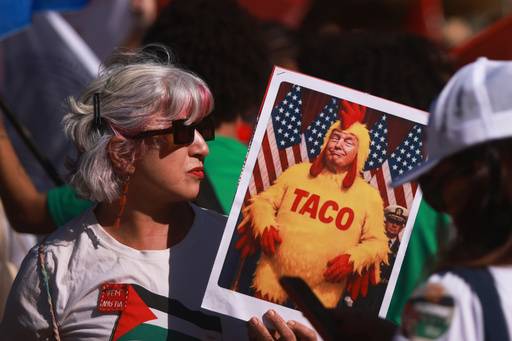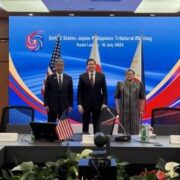Trump’s tariffs leave a lot of losers

WASHINGTON—President Donald Trump’s tariff onslaught this week left a lot of losers—from small, poor countries like Laos and Algeria to wealthy US trading partners like Canada and Switzerland. They’re now facing especially hefty taxes—tariffs—on the products they export to the United States starting Aug. 7.
The closest thing to winners may be the countries that caved to Trump’s demands—and avoided even more pain. But it’s unclear whether anyone will be able to claim victory in the long run—even the United States, the intended beneficiary of Trump’s protectionist policies.
“In many respects, everybody’s a loser here,’’ said Barry Appleton, codirector of the Center for International Law at the New York Law School.
Barely six months after he returned to the White House, Trump has demolished the old global economic order. Gone is one built on agreed-upon rules. In its place is a system in which Trump himself sets the rules, using America’s enormous economic power to punish countries that won’t agree to one-sided trade deals and extracting huge concessions from the ones that do.
Trump’s ‘biggest winner’
“The biggest winner is Trump,” said Alan Wolff, a former US trade official and deputy director general at the World Trade Organization. “He bet that he could get other countries to the table on the basis of threats, and he succeeded—dramatically.”
Everything goes back to what Trump calls “Liberation Day”—April 2—when the president announced “reciprocal’’ taxes of up to 50 percent on imports from countries with which the United States ran trade deficits and 10 percent “baseline” taxes on almost everyone else.
He invoked a 1977 law to declare the trade deficit a national emergency that justified his sweeping import taxes. That allowed him to bypass Congress, which traditionally has had authority over taxes, including tariffs—all of which is now being challenged in court.
Trump retreated temporarily after his Liberation Day announcement triggered a rout in financial markets and suspended the reciprocal tariffs for 90 days to give countries a chance to negotiate.
Caving to his demands
Eventually, some of them did, caving to Trump’s demands to pay what four months ago would have seemed unthinkably high tariffs for the privilege of continuing to sell into the vast American market.
The United Kingdom agreed to 10 percent tariffs on its exports to the United States—up from 1.3 percent before Trump amped up his trade war with the world. The United States demanded concessions even though it had run a trade surplus, not a deficit, with the UK for 19 straight years.
The European Union and Japan accepted US tariffs of 15 percent. Those are much higher than the low single-digit rates they paid last year—but lower than the tariffs he was threatening (30 percent on the EU and 25 percent on Japan).
Also cutting deals with Trump and agreeing to hefty tariffs were Pakistan, South Korea, Vietnam, Indonesia and the Philippines.
Even countries that saw their tariffs lowered from April without reaching a deal are still paying much higher tariffs than before Trump took office. Angola’s tariff, for instance, dropped to 15 percent from 32 percent in April, but in 2022 it was less than 1.5 percent. And while the Trump administration cut Taiwan’s tariff to 20 percent from 32 percent in April, the pain will still be felt.
“Twenty percent from the beginning has not been our goal, we hope that in further negotiations we will get a more beneficial and more reasonable tax rate,” Taiwan’s president Lai Ching-te told reporters in Taipei on Friday.

















